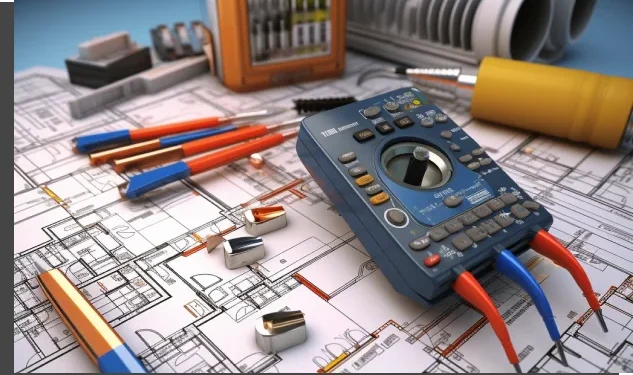In development, achievement isn’t just about completing a venture; it is tied in with finishing it effectively, inside a financial plan, and on time. Detailed estimates are important for achieving this. They form the basis for planning, executing, and completing a project. This Blog explored why detailed estimates are authorized for high-building projects with Construction Estimating Services, their benefits, the methods used to make them, the challenges faced, and best practices to check that the estimations are correct and thorough.
Contents
- 1 Understanding Detailed Estimations
- 1.1 Related posts
- 1.2 How Agentic AI is Redefining Automation in the UK
- 1.3 Why Every Traveler Needs a Global SIM Card for Seamless Connectivity
- 1.4 How to Find Free Proxy Servers in Laos: A Comprehensive Guide
- 1.5 Importance of Performance Testing of ERPs
- 1.6 How MICR Printers Streamline Operations in the Banking Sector
- 1.7 How Technology is Revolutionizing Aircraft Maintenance
- 1.8 A Guide On All You Need To Know About VY6YS
- 2 The Benefits of Detailed Estimations
- 3 Methodologies for Detailed Estimations
- 4 Challenges in Creating Detailed Estimations
- 5 Best Practices for Ensuring Accurate Detailed Estimations
- 6 Conclusion
Understanding Detailed Estimations
Detailed estimates in building need guardedly figure out all the resources needed to last a project, like labor, materials, equipment, extra costs, and emergency funds. Accurate estimations are authorized for setting the budget, planning the schedule, assigning resources as well as managing risks as well as boilersuit learning management.
The Benefits of Detailed Estimations
Accurate Budgeting and Cost Control
- Resource Allocation: Detailed estimates help allocate resources accurately, prevent too much or too small use, and ensure the learning stays inside the budget.
- Financial Planning: By accurately predicting costs, stakeholders could fix the needed funds and deal with cash flow effectively, avoiding fiscal problems during the project.
Improved Scheduling and Time Management
- Ameline Development: Accurate estimations help make tangible learning timeliness, making sure each part of the learning has plenty of time to finish.
- Milestone Tracking: Detailed schedules help set and track learning milestones, so any voltage delays can be spotted and fixed on time.
Enhanced Risk Management
- Risk Identification: By guardedly analyzing everything, we could spot voltage jobs early on and come up with ways to deal with them.
- Contingency Planning: Estimations ordinarily set aside extra resources for unexpected problems, making sure the learning can keep going even if things don’t go as planned.
Stakeholder Confidence and Communication
- Transparency: Sharing detailed estimations with everyone involved builds trust and pledge in how the learning is managed.
- Clear Communication: Having well-documented estimations makes it easier for everyone working on the project, as well as stakeholders and clients, to learn what was going on and what to expect, keeping everyone on the same page.
Optimization of Resources
- Efficiency: Planning everything in an item helps us use resources in the best way possible, so we waste less and get more done.
- Sustainability: Using resources expeditiously not only saves money but also helps the environment by reducing the subtraction effects of building work.
Methodologies for Detailed Estimations
Analogous Estimating
- Historical Data: It uses data from past projects to guess costs and timeliness for the modern-day one. It’s quick but might not be super exact.
- Suitability: This commercial worked well for early estimates or when we did not have a lot of detailed info.
Parametric Estimating
- Statistical Modeling: It uses math to justify costs based on past data and other factors.
- Accuracy: This commercial is more correct than correspondent estimating, particularly for projects with clear numbers.
Bottom Up Estimating
- Detailed Breakdown: Here, we figured out the cost of each small job of Electrical Estimating Service and added them all up to find the total cost.
- Precision: It’s very accurate, but it took a lot of time. So, it is great for big as well as complicated projects where we need to look at everything closely.
Three Point Estimating
- Risk Assessment: It looks at the best case, worst case, and most clever scenarios to deal with uncertainties and risks.
- Balanced Approach: This commercial gives a fair estimate, so if things change or unexpected stuff happens as well as we are ready for it.
Monte Carlo Simulation
- Probability Analysis: Computers ran finished lots of voltage outcomes based on uncertainties we put in.
- Risk Management: It helps us figure out how clever clear-cut costs or timeliness are, so we can plan for unexpected stuff and deal with risks better.
Challenges in Creating Detailed Estimations
Data Accuracy and Availability
- Historical Data: If we cannot find good past data or it is not accurate,’ it could cause problems with our estimates.
- Data Collection: Getting the right data takes a lot of work, particularly when things are ever-changing.
Scope Changes
- Dynamic Projects: Construction projects often exchange because of things like what the guest wants, new rules, or unexpected stuff at the site.
- Flexibility: Our estimates need to be able to deal with changes without messing up the budget or schedule.
Technological Integration
- Software Utilization: Using fancy parcels for estimating could be hard because it needs training and sometimes new gear.
- Adaptability: Our estimating methods need to keep up with new tech and how things are done in the manufacture to be accurate.
Human Factors
- Expertise: How good our estimates are depends a lot on who is doing them. If they are not experienced or make mistakes, it can mess things up.
- Bias: Sometimes, estimators might have opinions that sneak into their estimates, making them too golden or too negative.
Best Practices for Ensuring Accurate Detailed Estimations
Standardization of Processes
- Consistent Methodologies: Use the same ways of estimating across all projects to make sure they are reliable.
- Templates and Tools: Have received templates and tools for estimating to make the ferment easier and less clever to have mistakes.
Training and Development
- Skill Enhancement: Keep estimators learning so they know the newest stuff and can do their job better.
- Knowledge Sharing: Make sure teams talk and share what they know so everyone can do meliorate estimates.
Use of Advanced Technologies
- Estimation Software: Use fancy parcels to make estimating more exact and faster.
- BIM Integration: Mix Building Information Modeling BIM with estimating to get the best, more conciliatory estimates.
Regular Review and Updates
- Continuous Monitoring; Keep checking on estimates through Lumber Takeoff Service and update them when things exchange so they are still accurate.
- Feedback Loops: Learn from old projects and make estimates by talking about what worked and what did not.
Conclusion
Detailed estimates were super-authorized for making building projects work well. They help us figure out how much money and time we need, what resources to use, and how to deal with any problems that might arise. By using good methods for estimating as well as facing challenges head-on, and doing things the best way, building projects could reach their goals smoothly. Detailed estimates were important for managing all the wily stuff in the building and making sure projects turned out great.


















